- Unit15 Jul 2011
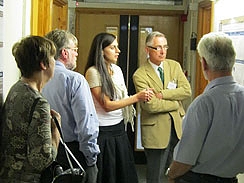
At the invitation of Paul Bolam, SPRING held its AGM on 15th July in the lecture theatre and seminar room in Pharmacology. The meeting included two lectures and lab visits for individuals with Parkinson's disease and their carers. In the morning session Paul Bolam lectured on 'The use of animals in medical research' and in the afternoon session Pete Magill gave a lecture on his research into beta oscillations in Parkinson's disease. The lectures were broken up with a tour of the labs, which were hosted by Elizabeth Hartfield in Richard Wade-Martins' lab, Katie Jennings in Steph Cragg's lab and groups were shown around the Basal Ganglia labs where some of the work that is being carried out was demonstrated to the participants (aided by Paul Dodson, Natalie Doig, Ben Micklem, Megan Dowie, Eleftheria Pissadaki). Organisation of the day was done by Jo Stocker and Chad Johnson ran the AV. Thank you to all who made the day a success.
- Unit15 Jul 2011
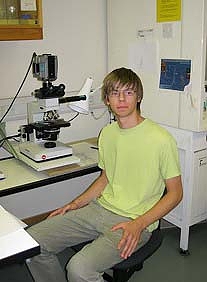
Mr. Artur Koroknai has joined Peter Somogyi's lab for his month long scholarship under the Oxford Cajal Scholarship scheme. He won the Ramon y Cajal essay competition on the organisation of the brain.
The title of his essay was: "Tükrözi-e az idegrendszer szerkezete és működése fejlettségi szintjét? - Does the structure of the nervous system reflects its developmental level? Or... Why humans are causing the sixth great extinction of life in the history of the Earth?"
Artur will matriculate next year in the Franciscan Gimnázium of Szentendre, Hungary, a town where Prof Somogyi studied.
In Oxford, he learns concepts of brain organisation and participates in the analysis of neuronal circuits in the hippocampus using microscopic methods.
- Unit5 Jul 2011
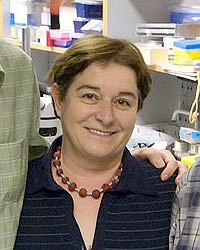
We are pleased to welcome back Klara Peto from St Istvan University, Budapest, Hungary for a return visit for ongoing collaborative work in Professor Somogyi's lab. She studies the synaptic targets of basket cells in the prefrontal cortex.http://www.univet.hu/
- Unit1 Jul 2011
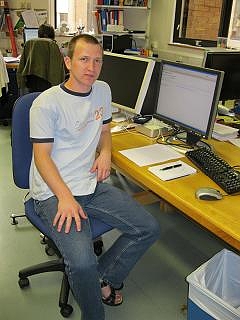
We are pleased to welcome back Mr Zoltan Andras for a visit as Visiting Student to Professor Peter Somogyi's lab. He will continue the evaluation of GABA-A receptor subunits on CA1 pyramidal cells. Zoltan has recently successfully completed his degree in information technology at the EMTE Sapientia - Hungarian University of Transylvania in Targu Mures, Romania. http://www.jcu.edu/language/hunghemu/Sapientia.html
- Unit30 Jun 2011
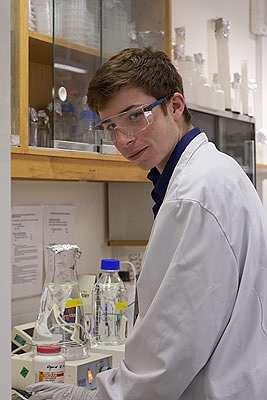
This week, members of the Magill Group and Bolam Group were playing hosts to Thomas Hardy, a Year 10 school student visiting from Bournemouth School for Boys. Tom has a keen interest in neuroscience, and came to the Unit to learn more about the practical side of neuroscience research in a real working lab. During his visit, Tom viewed every stage of a typical experiment in the lab, and helped the team prepare salt solutions, perform immunohistochemical reactions, and analyse the expression of proteins in striatal neurons. We hope to see Tom making his own neuroscience discoveries in the not too distant future!
- Unit27 Jun 2011
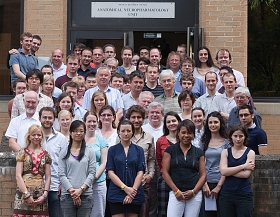
The Unit held its biannual Science Day on Monday 27th June 2011. Presentations featured ongoing projects and future proposals. List of attendees. Programme.
- Unit23 Jun 2011
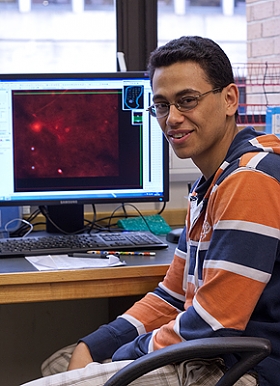
We are pleased to welcome Mr. Farid Garas to the Unit. Farid is an undergraduate student studying for his BMBCH medical degree at Pembroke College, and has joined the Magill Group to undertake his Final Honours School research project. Farid is using light microscopy and immunohistochemistry to define the molecular architecture of striatal interneurons.
- Unit23 Jun 2011
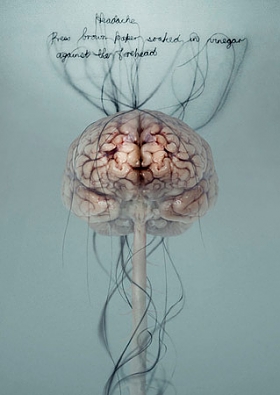
Artist Helen Pynor visited the Basal Ganglia Lab on the 23rd June. Helen's artworks often involve scientific concepts and she has a particular interest in biology. In her work Helen is interested in attempting to incorporate a holistic view of the body, considering the biological basis as well as cultural concept of self. Prior to her current profession as a fine artist (including completing her PhD at the University of Sydney), she had a brief career as a scientific researcher. This may have influenced her approach to her art practice, which is highly research-driven.
Megan Dowie showed Helen some of the equipment and techniques we use, from the gross level of sectioning whole brains, through to immunohistochemistry and the nano-scale of electron microscopy. Helen enjoyed her visit to the Unit, saying it was great to actually see the processes we use to obtain our data, as well as seeing the beauty of neurons down the microscopes.
There is currently a show of Helen Pynor's work at GV Art Galleryin London until 2 July.
More of Helen's work can be viewed on her website.
Liquid Ground 1 (detail), Helen Pynor, 2010, C-type photograph, 160 x 110cm. Courtesy the artist and GV Art, London.Headache (detail), Helen Pynor, 2008, C-type photograph, 173 x 39cm. Courtesy the artist and GV Art, London.
- Unit20 Jun 2011
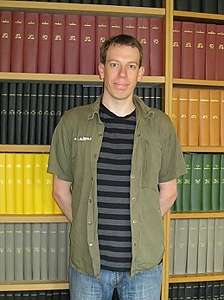
Welcome to Chad Johnson who is taking over from Ben Micklem as the Imaging Research Technician. Chad is originally from New Zealand where he completed his Masters degree at Massey University in Palmerston North studying genetic damage of nuclear weapons tests in navy veterans. He continued in genetics at Massey as a research technician/lab manager studying cell cycle and mitochondrial mutants of the fission yeast, Schizosaccharomyces pombe. For the past 3 years he has been an optical microscopy technician at Monash Micro Imaging (MMI) at Monash University in Melbourne, Australia.
- External23 May 2011
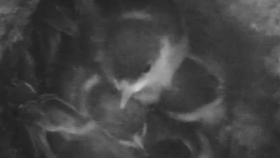
This clip was recorded on Monday the 23rd of May. The chicks are practising by flapping their wings rapidly, and are grooming. The chicks fledged on Thursday 26th May.